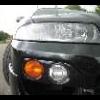Yay ! 212kw With Safc ! !
Announcements
-
Similar Content
-
Latest Posts
-
Yeah so physically that port is consult not OBD2, but also be aware that "JODB" is not really a thing - it came in around 2000(ish) but is not a standard like ODB is, each manufacturer had differences. If you are looking at ECU only and have a standard ECU, go with Datascan as Turbo Tapin said. Per another recent discussion here thought that won't do other systems like in a modern car, for example bleeding ABS
-
They're not rebuilt Racepace items. They were mint. From memory the were ex display stock that I bought off yahoo and he ran....from memory he barely used the REs when he replaced them with a set of Tein RS If have been stored correctly and not leaked fluid then they will be mint As an observation the Racebuilt rebuilt Tein RA/RE/RS were a better street/club/track package. Really nice on the street and did good numbers at the track. I think the factory Teins wont match the Racepace valving on the street but would be in the same window of performance on the track... albeit firmer
-
The one time that Clippy is actually useful!
-
Paper clip method to read codes also works.
-
By TurboTapin · Posted
It's a 14pin Consult connector. You can use software like Nissan Datascan (NDS 1) to connect.
-








Recommended Posts
Create an account or sign in to comment
You need to be a member in order to leave a comment
Create an account
Sign up for a new account in our community. It's easy!
Register a new accountSign in
Already have an account? Sign in here.
Sign In Now